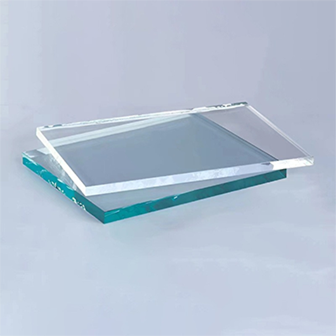Dec . 05, 2024 18:07 Back to list
toughened and laminated glass
Toughened and Laminated Glass A Comprehensive Overview
In the realm of modern architecture and construction, glass plays an indispensable role not only in aesthetics but also in structural integrity and safety. Among various types of glass products available today, toughened (or tempered) glass and laminated glass have emerged as two of the most popular choices for both commercial and residential applications. Each type has its unique properties and advantages, making them suitable for different uses.
Toughened Glass Strength and Safety
Toughened glass is manufactured through a process of extreme heating and rapid cooling, which significantly increases its strength compared to ordinary glass. This thermal tempering process alters the internal structure of the glass, creating compressive stresses on its surface while maintaining tensile strength in the center. As a result, toughened glass is about five to six times stronger than standard glass of the same thickness.
One of the most significant benefits of toughened glass is its safety. When it does break, it shatters into small, blunt pieces rather than sharp shards, reducing the risk of injury. This property makes toughened glass an ideal choice for environments where safety is paramount, such as in buildings, facades, shower screens, and glass doors.
Additionally, toughened glass can withstand high thermal stresses, allowing it to be used in scenarios involving temperature fluctuations. This adaptability means it can be used in both hot and cold climates without compromising integrity. However, it’s crucial to note that toughened glass cannot be cut or otherwise modified after its manufacturing process because it will lose its tempering and strength properties.
Laminated Glass Versatility and Noise Reduction
toughened and laminated glass

Laminated glass, on the other hand, consists of two or more layers of glass bonded together with interlayers, typically made of polyvinyl butyral (PVB). This composition not only enhances the glass's strength but also provides additional benefits that are particularly valuable in various contexts.
One of the primary advantages of laminated glass is its ability to hold together even when shattered. If a laminated glass panel breaks, the cracks will remain confined within the interlayer, preventing dangerous shards from dispersing. This characteristic makes laminated glass an excellent option for areas where security and safety are critical, such as in skylights, glass roofs, and windows in high-risk areas.
Laminated glass also excels in acoustic insulation. The interlayer effectively dampens sound waves, making it a popular choice for buildings situated in noisy environments, such as near busy roads or airports. This property creates a quieter indoor environment, enhancing comfort levels for occupants.
Moreover, laminated glass can be manufactured with UV protection capabilities, helping to reduce fading of interior furnishings and artworks. This makes it a favored choice in museums and galleries, where preserving the integrity of displayed items is crucial.
Applications and Conclusion
Both toughened and laminated glass have found widespread applications in various industries. Toughened glass is often used in structural applications like glass balustrades, safety glass for vehicles, and glass facades, where strength and safety are vital. Laminated glass is commonly employed in architectural features, automotive windshields, security glazing, and acoustic applications due to its diverse benefits.
In conclusion, the choice between toughened and laminated glass ultimately depends on the specific needs of a project. While toughened glass offers superior strength and safety, laminated glass provides versatility, security, and sound insulation. Both types contribute to modern aesthetics while ensuring safety, making them integral materials in contemporary design and construction. Whether enhancing the face of a high-rise building or safeguarding the interior of a quiet home, toughened and laminated glass continue to push the boundaries of what glass can achieve in our built environment.
-
Safety and Style with Premium Laminated Glass Solutions
NewsJun.24,2025
-
Reinvents Security with Premium Wired Glass
NewsJun.24,2025
-
Premium Float Glass Line for Modern Architecture
NewsJun.24,2025
-
Low Emissivity Glass for Energy-Efficient Architecture
NewsJun.24,2025
-
High-Performance Insulated Glass Solutions for Modern Architecture
NewsJun.24,2025
-
Elevates Interior Style with Premium Silver Mirror
NewsJun.24,2025
Related PRODUCTS














